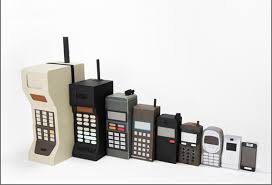The United States faces a fundamental mismatch between surging demand and insufficient capacity.
2026 Physician Fee Schedule, released in July, directs reimbursement toward remote monitoring and value-based care in the home.
Older adults can save tens of thousands of dollars annually by choosing assisted living communities over aging in place in their homes.
Unlike point solutions, Inspiren unifies resident safety, care planning, staffing, and emergency response into a single AI-powered platform.

 AI – it’s everywhere, including tech for older adults. So what is AI?
AI – it’s everywhere, including tech for older adults. So what is AI?  Once upon a time, there were photo albums. You know, the kind that have leather-like binders, with plastic covers for the prints. People would buy extra prints for their friends and relatives after a big event like a wedding (remember wedding albums?). Binders would fill bookshelves (remember bookshelves? They once held books). Then along came Facebook so that families could keep up with each other’s kid and dog photos. A study in 2013 noted that this was a bit
Once upon a time, there were photo albums. You know, the kind that have leather-like binders, with plastic covers for the prints. People would buy extra prints for their friends and relatives after a big event like a wedding (remember wedding albums?). Binders would fill bookshelves (remember bookshelves? They once held books). Then along came Facebook so that families could keep up with each other’s kid and dog photos. A study in 2013 noted that this was a bit  Shining a harsh light on Facebook – the company. Founded by a near-teenager in 2004, the company is a
Shining a harsh light on Facebook – the company. Founded by a near-teenager in 2004, the company is a  Few of the oldest are ever surveyed about tech adoption – least of all using paper. Link-Age Connect has surveyed the oldest about tech use since 2011, with periodic surveys fielded to older adults via their member organizations. In 2011, that represented 122,000 residents drawn from its member communities across 22 states. The member communities in 2011 distributed 5000 paper surveys and got back 1789 completed, a 35% response rate. Many were completed with assistance for people with limited vision or mobility. All were transcribed for analysis and use in the published report,
Few of the oldest are ever surveyed about tech adoption – least of all using paper. Link-Age Connect has surveyed the oldest about tech use since 2011, with periodic surveys fielded to older adults via their member organizations. In 2011, that represented 122,000 residents drawn from its member communities across 22 states. The member communities in 2011 distributed 5000 paper surveys and got back 1789 completed, a 35% response rate. Many were completed with assistance for people with limited vision or mobility. All were transcribed for analysis and use in the published report,  August should have been a sleepy month – but no.
August should have been a sleepy month – but no.